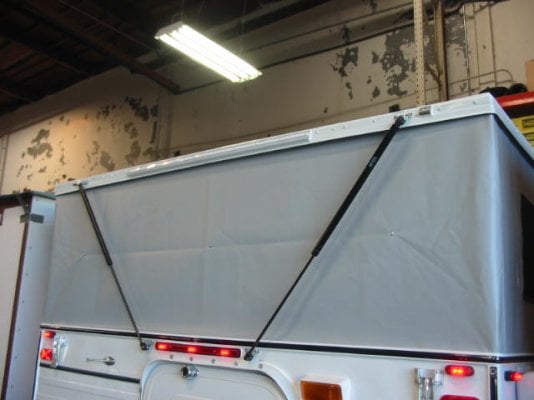Has the Supra brand been discontinued? Having a hard time finding a good source online. Anyone have a link for me?
Here's a link to one source:
Suspa C16-15952 on ebay
I didn't shop around, so these may not be the cheapest source...but I ordered two pairs of these today.
(unfortunately, I also ordered two pairs of brackets...when it's four pair of brackets that's needed.
)
-------------------------------------
OK, here's an issue/question that I didn't see asked/mentioned (though I only read the last 10 pages of this thread):
I see most pictures showing the two brackets that are closer together (could be on top or on the bottom) are usually mounted as close together as possible -- even when there's room to spread them wider, such as in this photo:
Maybe it's fine to do it this way....but is there an advantage to putting the close-together ends as close as possible -- if spacing isn't limited by the roof latches?
At the rear of my 2005 Hawk there's ~72 inches space between the latches and in the front there's 54 inches. The struts, compressed, are <20 inches long, so combined they're ~40 inches. Any reason I shouldn't make use of that space and spread them out? Probably isn't a big deal either way...but my rationale is this: If two people were going to lift the roof with their own muscles, would they stand right next to each other (or with their hands right next to each other) OR would each guy stand and lift near a corner -- i.e., spread out?
Anyway, that's the way I'm gonna do it if I don't hear/think of a reason not to.
Another mounting-position question that probably doesn't really matter, but I'm asking:
Any reason to choose between: 1) putting the close-together ends of the struts on the roof (making an A-shape)? or 2) putting the close-together ends on the camper body (making a V-shape)? I've seen it both ways, and didn't notice a comment on it, so probably doesn't matter.
I have enough room on mine to do it either way.







